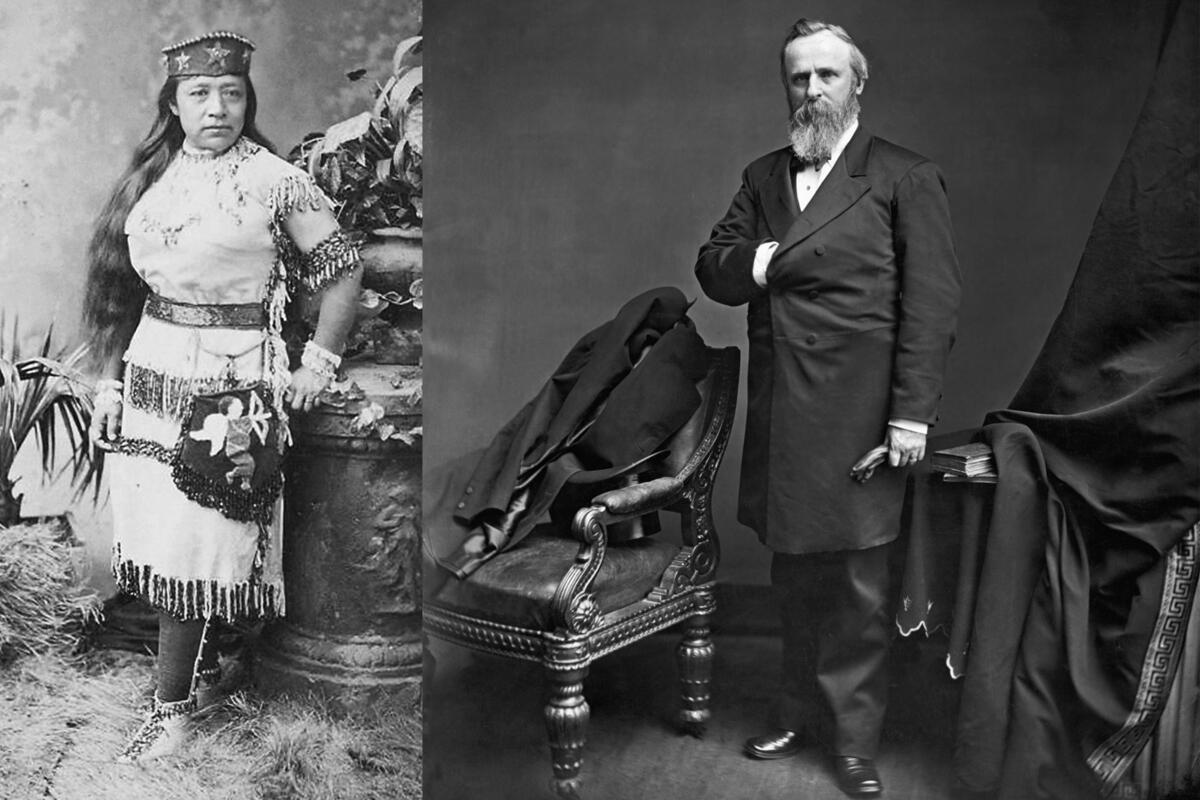UNLV history professor William Bauer will present the University Forum talk American Indians and U.S. Presidents: Building Nation-to-Nation Relationships at 7:30 p.m. Oct. 5 in the Barrick Auditorium. Here he offers a preview of his talk, which is free and open to the public.
In January 1880, Sarah Winnemucca, a northern Paiute woman, traveled to Washington, D.C. to meet with President Rutherford B. Hayes. She accompanied her father, “Chief” Winnemucca, and a group of Paiutes who opposed the Secretary of the Interior’s proposal to remove the Paiutes from the Malheur Reservation, in southern Oregon, to the Yakama Reservation in Washington. Sarah and the Paiutes spent several days in the nation’s capitol; they went on sightseeing expeditions and met with government officials. On a Saturday, the Paiutes toured the White House and eagerly awaited the president.
“A great many ladies were there to see us,” Sarah remembered. President Hayes entered the room, shook the hands of the assembled Paiutes, spoke two sentences and briskly left. “That was President Hayes,” Sarah coldly remarked. Her likewise unimpressed father gave away the suit of clothes Hayes had given him once he returned to the Malheur Reservation. “I don’t care for them,” he said.
Since 1783, American Indian leaders have traveled to the nation’s capitol to negotiate with whoever was president at the time. Some travelled to discuss land issues, like Sarah and the Paiutes; others came to negotiate and sign treaties. More recently, American Indians have arrived in Washington, D.C., to receive honors for their service to the United States. In whatever capacity, in whatever time period, American Indians have arrived in the nation’s capital and met with the presidents as representatives of sovereign nations.
My lecture explores three expeditions of American Indian leaders to Washington D.C. In 1790, Creek leader Alexander McGillivray negotiated and signed the Treaty of New York with President George Washington. In 1873, Manuelito and his wife, Juanita, met with President Ulysses S. Grant regarding the Navajo Reservation. In 1875, Oglala Lakotas, led by Red Cloud, met with President Grant in regards to the Black Hills. This presentation pays attention to the varied roles of American Indian women, who functioned as diplomats. American Indian diplomats and leaders created their sovereignty, self-determination, and nation-to-nation relationships by meeting with Presidents of the United States.
Despite the importance of American Indians’ relationship with the federal government and the executive branch, few presidential candidates discuss American Indians and it is unlikely that this year’s debates will feature American Indian issues despite the current Standing Rock Sioux Nation’s protest of the Dakota Access Pipeline. This presentation, then, affords an opportunity to consider to current state of American Indian and federal relations and ponders the future of that relationship.



